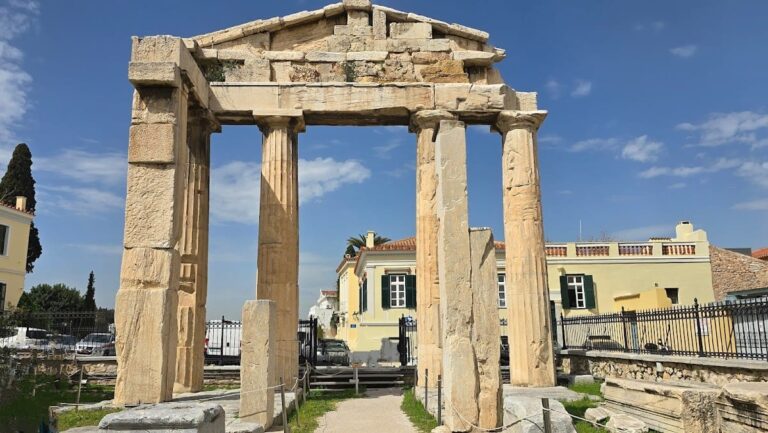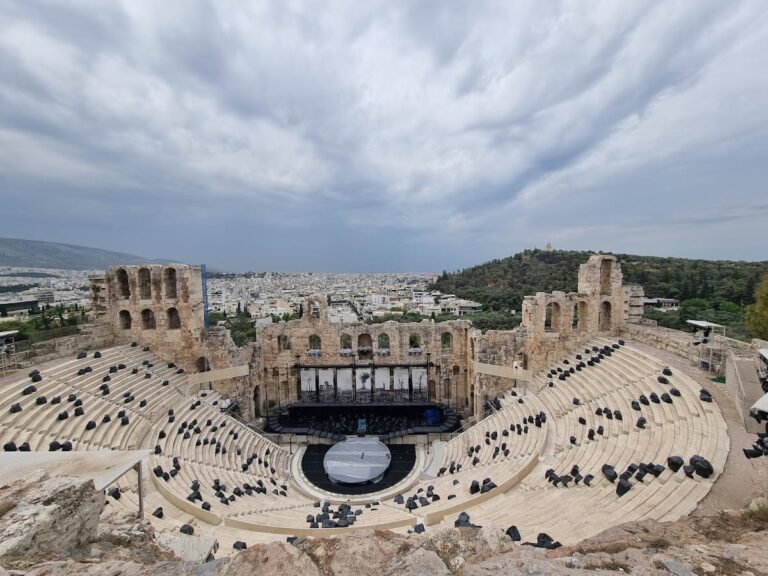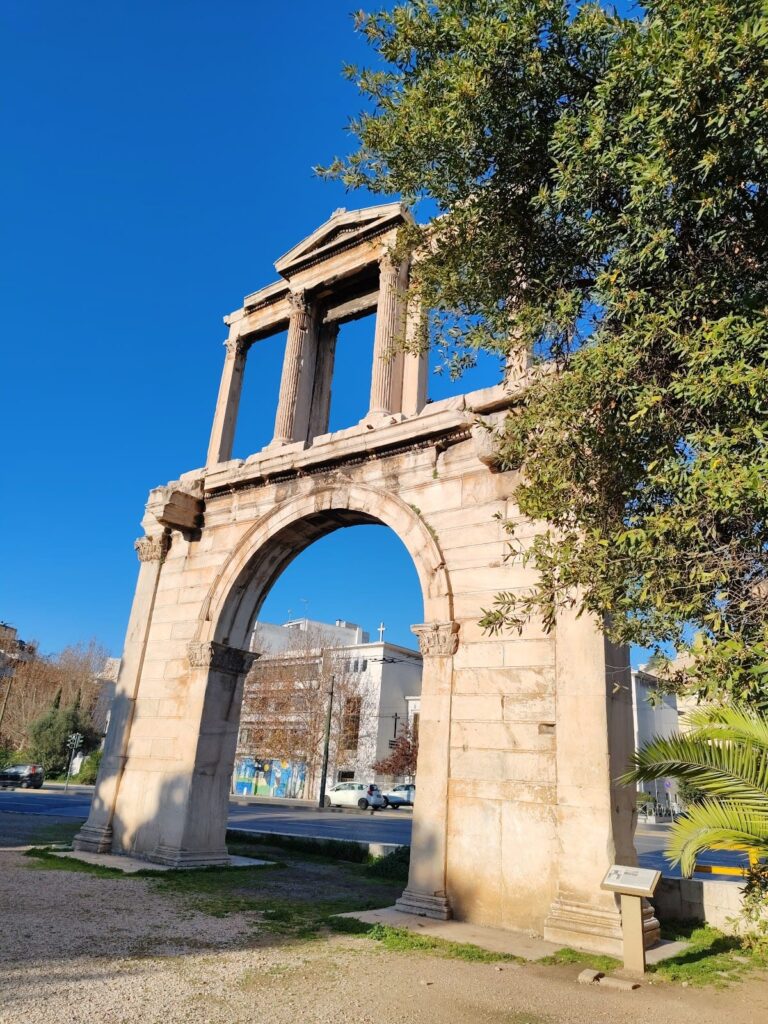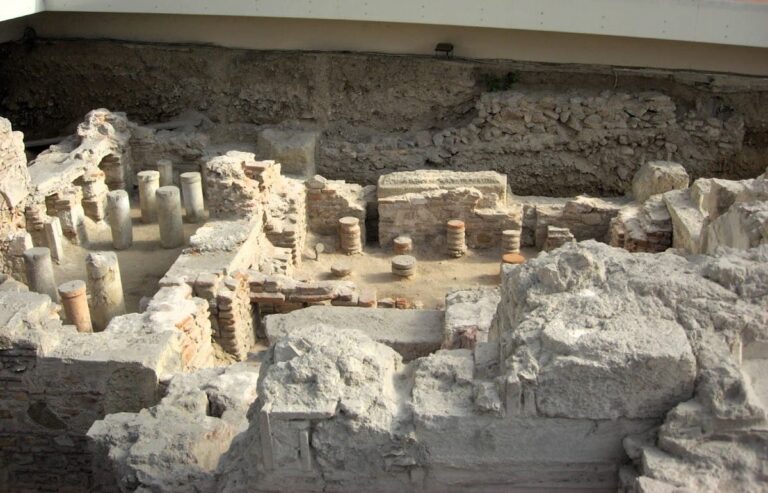Hadrian’s Library Athens: A Roman Cultural Center
Visitor Information
Google Rating: 4.4
Popularity: Medium
Google Maps: View on Google Maps
Country: Greece
Civilization: Byzantine, Roman
Remains: Civic
History
Hadrian’s Library is located in the Monastiraki area of Athens, north of the Acropolis. It was built by the Roman Emperor Hadrian in AD 132 during his reign from 117 to 138. Hadrian, known for his admiration of Greek culture, frequently visited Athens and initiated a large building program that included this library, the expansion of the Roman Agora, and the completion of the Temple of Olympian Zeus. The library served as a cultural and intellectual center in the Roman period.
In 267 AD, the library suffered severe damage during the Herulian invasion, a barbarian attack that affected much of Athens. Despite this destruction, the site was restored between 407 and 412 AD by the Roman prefect Herculius, who undertook repairs to revive its function. Following this restoration, the library complex became integrated into the city’s late Roman defensive walls.
During the Byzantine era, the site transformed significantly. Three churches were constructed within the library’s courtyard: a tetraconch church in the 5th century, a three-aisled basilica in the 7th century, and a cathedral known as Megali Panagia in the 12th century. Megali Panagia was the first cathedral of Athens. Another church, Agios Asomatos sta Skalia, was built against the north facade around the same time but has not survived. The area evolved into the economic heart of medieval Athens.
Under Ottoman rule, the library’s remains housed the residence of the Turkish Voivode, the local governor. In 1884, a major fire destroyed many small shops and the Megali Panagia church, clearing the way for archaeological excavations. These began in 1885–1886 under Stephanos Koumanoudis and Wilhelm Dörpfeld, with further work by Ioannis Travlos in 1950. In 1988, a large statue of the goddess Nike (Victory) dating from the 1st century BC was uncovered on the site and is now displayed there.
Remains
Hadrian’s Library was designed in the style of a Roman forum, featuring a large rectangular courtyard approximately 100 by 70 meters. The complex was enclosed by a high wall and centered on an oblong decorative pool. Surrounding the courtyard was a colonnade of Corinthian columns made from pink Phrygian and Pentelic marble, materials prized for their color and quality.
The main entrance was monumental, consisting of a propylon with four pink Phrygian marble columns topped by Corinthian capitals. This gateway was part of the Stoa of Hadrian, whose western facade wall still stands. The wall is built from Pentelic marble and decorated with projecting Corinthian colonnades made of green Karystian marble, creating a striking visual contrast.
On the eastern side of the courtyard, five halls were arranged. The central hall contained wall niches that once held shelves for papyrus scrolls, indicating its use as the main library space. Flanking this hall were two reading rooms, while two corner rooms likely served as lecture halls. The central hall may have risen three stories high and could store between 18,000 and 20,000 scrolls.
Within the courtyard, remains of Byzantine churches are preserved, including the 5th-century tetraconch and the 7th-century basilica. Inscriptions honoring Emperor Hadrian and relief fragments such as a Gorgoneion (a protective image of the Gorgon’s head) have also been found. These elements reflect the site’s layered history and changing uses over time.
Today, the ruins stand adjacent to the 18th-century Tzistarakis Mosque, highlighting the site’s continuous occupation and adaptation.










